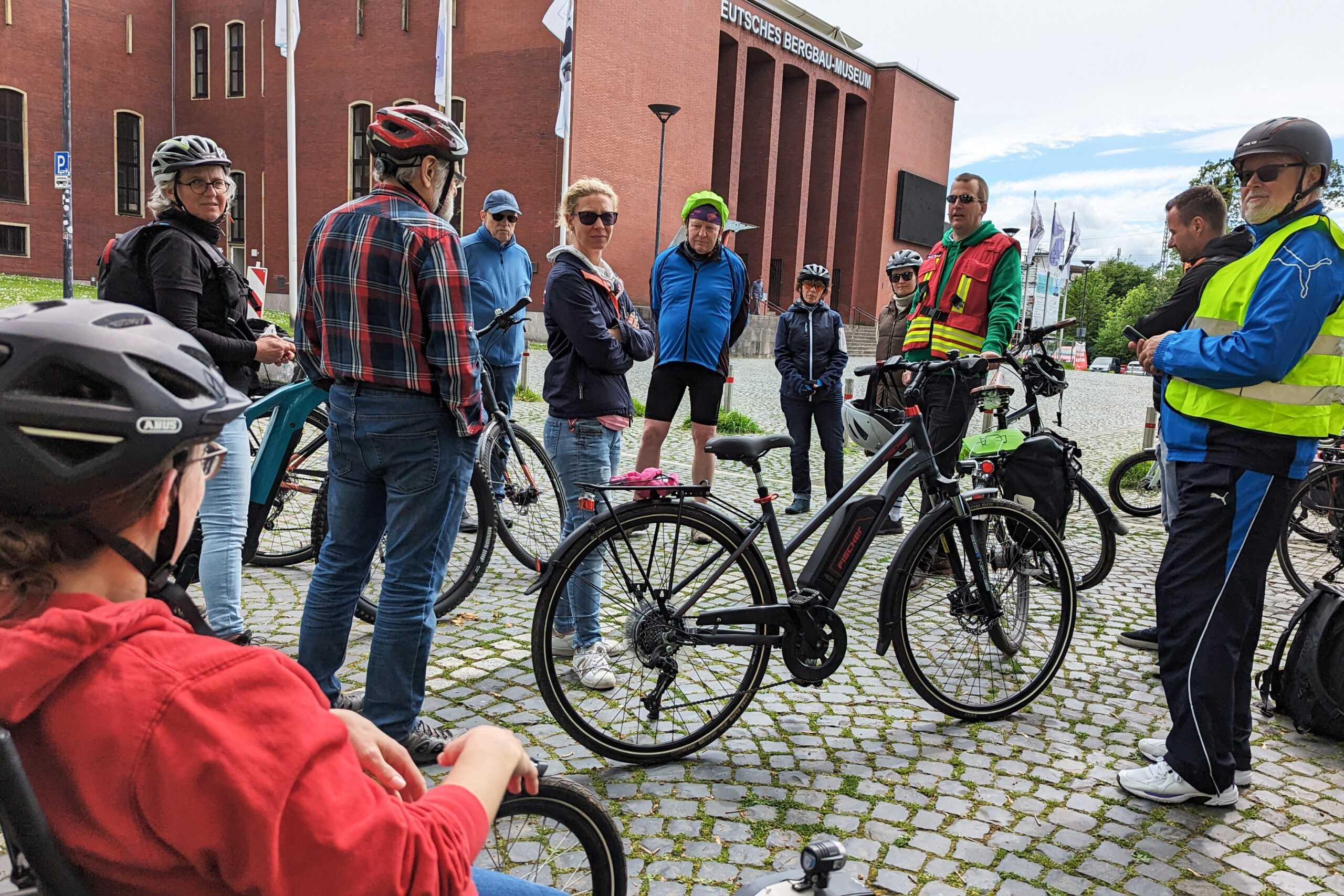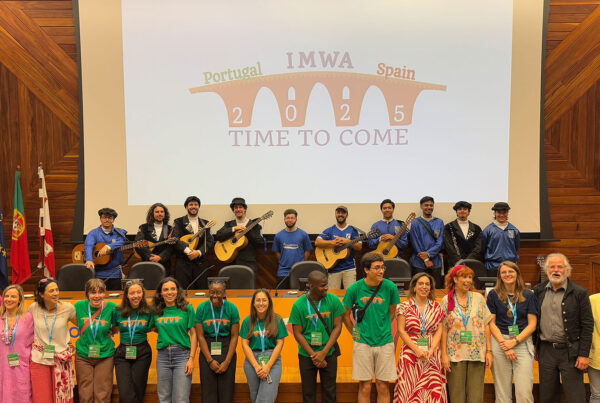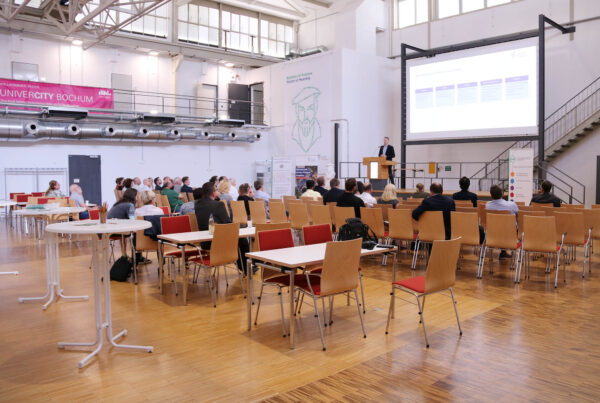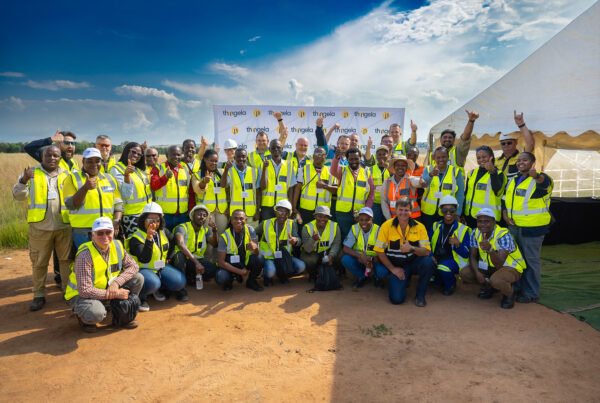When Peter Pusch gets on his bike, industrial heritage sites are among his favorite destinations. “I'm actually fascinated by everything that has to do with mining,” says the 69-year-old from Bochum-Hofstede. “My father, grandfather and father-in-law were all miners, so I'm very interested in it.” Today he has joined a special tour that takes a different look at the legacy of the coal mining industry: Under the guidance of Prof. Dr. Tobias Rudolph from the Georg Agricola University of Applied Sciences (THGA), he is going on a “post-mining bike tour” with around 15 participants from VHS Bochum.
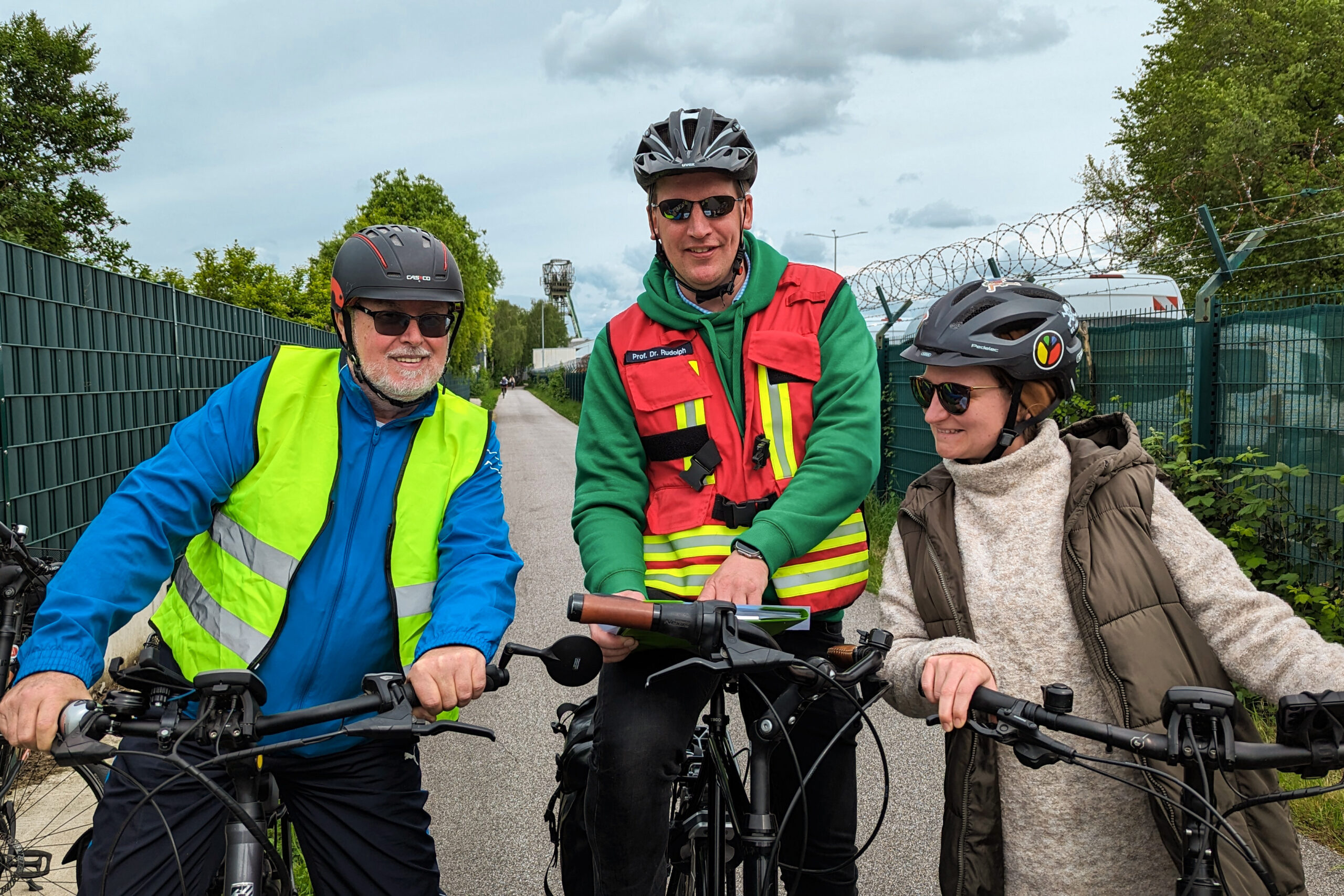
Searching for traces by bike: Peter Pusch, Prof. Dr. Tobias Rudolph and Alisa Kneip (from left to right) explore the legacy of mining in Bochum.
“Mining leaves traces that surround us - sometimes consciously, sometimes unconsciously,” explains the expert from the Research Center for Post-Mining at the THGA. “Mining has left its footprint in Bochum in particular, and practically on every corner. In our themed route, we want to make these traces 'tangible' by bike.” The starting point is, of course, the home university: the THGA on the Nordring, Bochum's former mining school, once trained skilled workers for the Ruhr mining industry; today, modern engineering sciences are studied here.
In the direct vicinity of the university, the first disused shaft of the Präsident colliery awaits the participants: How are such old structures properly secured? How is a shaft backfilled and how can it be monitored? “This definitely works differently than most people think,” explains Prof. Rudolph. “A shaft like this is not backfilled from top to bottom - that would use up too much material. Instead, it is given a kind of 'concrete cork' that is held in place by the natural rock pressure.” To ensure safety, the subsoil is permanently monitored. So far with control drives, but soon with suitable sensor technology, which is currently being developed at the Research Center for Post-Mining.
Eternal tasks and the resource of water
As they continue along the ore railway line - another relic from the industrial age - the VHS group quickly realizes that post-mining is all about safety and responsibility: “In Germany, it is clearly regulated that the operator of a mine must take care of the complex tasks that arise long after closure. Nobody throws away the key and is out.” The so-called perpetual tasks in particular play a central role in the Ruhr region: “These tasks all deal with the resource of water in our region - such as the controlled rise of mine water,” says Rudolph, looking at the shaft frame of the former Carolinenglück colliery. Here and at other central locations, mine water is currently being pumped to keep it at a level so that it does not mix with drinking water reserves - a huge technical challenge.
Another task for the future is the sustainable use of surface water. Peter Pusch and his fellow cyclists experience this at Hüller Bach and Grummer Teichen. “Here you can clearly see how intensive mining has changed the surface structure in our region in the long term,” explains Rudolph. In some places, the terrain has sunk so much that large depressions have formed - the so-called polder areas. In these areas, some bodies of water can no longer flow freely. The 'lowered' areas must therefore be permanently drained artificially so that the water from rivers and lakes does not back up.
Diked streams, pumping stations and changing groundwater levels are the secret witnesses to these processes: “We've already had many ‘aha moments’ today,” says participant Monika Ewert enthusiastically. The water management and the connections to our region's mining past are particularly exciting for many: “Of course, you could do tours like this on your own, find out more and read up. But it's much more fun in a group - you can hear other people's stories and ask direct questions,” says the Wattenscheid native.
The participants then learned what happens to leaking methane, how former sites are being repurposed and what innovative methods are being used to preserve industrial heritage: “A headframe is originally designed to last 50-60 years - but these objects are now landmarks, event venues or museums. People are attached to them,” says Rudolph. He and his scientific team are therefore investigating how decay can be prevented. The professor even sends drones on inspection flights equipped with optical, thermal and multispectral sensors. They find rust and damaged areas that are barely visible to the naked eye. This technology was also used on the headframe of the German Mining Museum in Bochum, which is currently being renovated - the final stop on the moving bike tour through the north of Bochum. “Keep your eyes open,” Prof. Rudolph appeals in conclusion: ”Mining influences our region, sometimes forever. But it also offers future generations great opportunities and possibilities for redevelopment.”
Editors: Carmen Tomlik

The groundwater level provides information on areas of subsidence in mining: Prof. Rudolph and participant Ralf Eichenauer from Gladbeck determine the water level.


